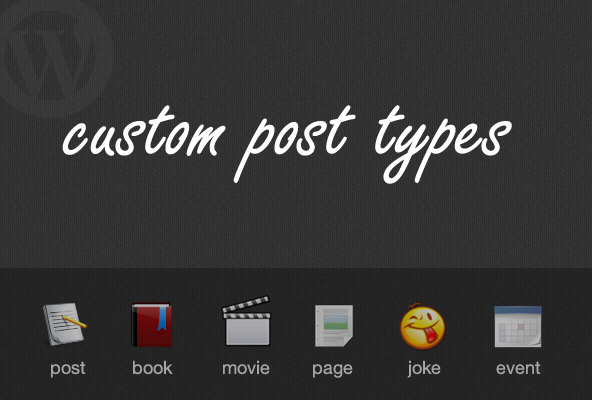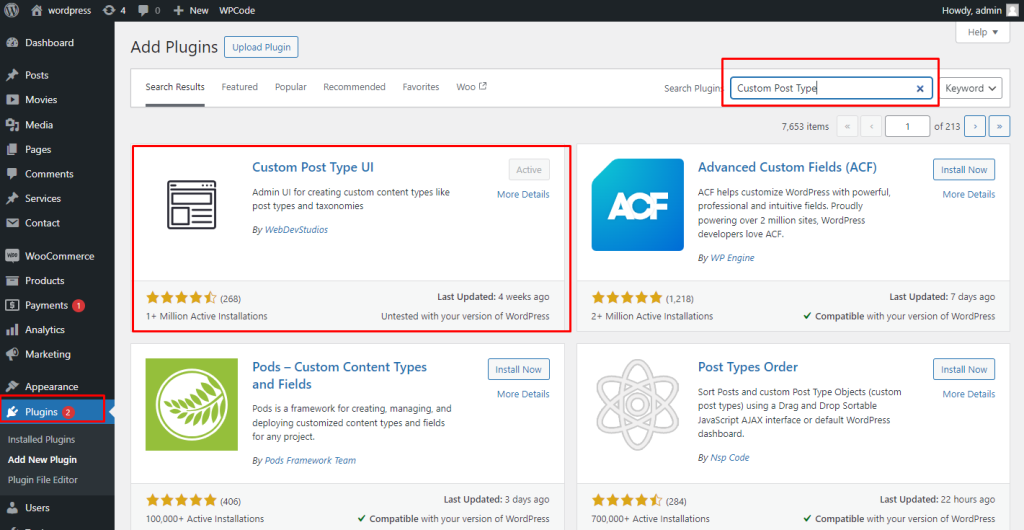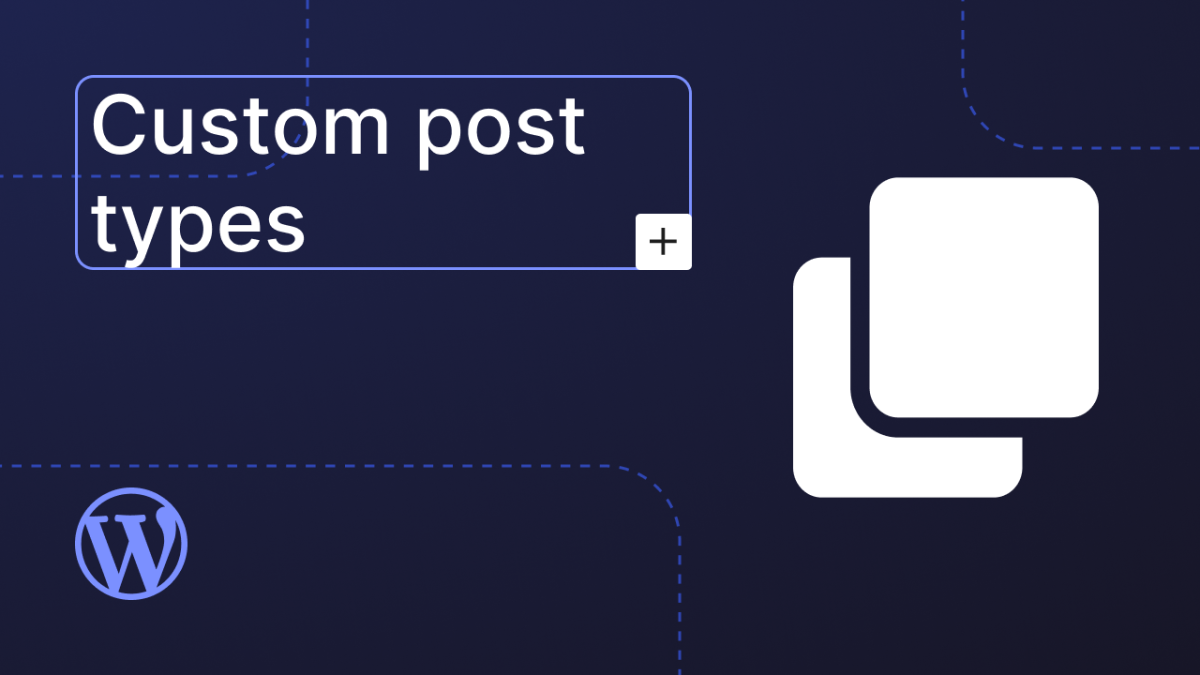Introduction
WordPress is known for its flexibility, and one of its most powerful features is the ability to Creating Custom Post Types and Taxonomies. These tools allow developers to structure content in ways that go far beyond the default “posts” and “pages,” making WordPress a true content management system (CMS).
Whether you’re building a portfolio, a product catalog, a directory, or a learning platform, custom post types and taxonomies help organize and display content more effectively. In this blog, we’ll explore what they are, why they matter, and how to create and use them in your WordPress projects.
1. What Are Custom Post Types?
A custom post type is a content type you define in WordPress. While WordPress comes with built-in types like posts, pages, attachments, and revisions, you can create your own to suit specific needs.
Examples
- Portfolio items
- Testimonials
- Products
- Events
- Recipes
- Courses
Each custom post type can have its own layout, metadata, and functionality.
2. What Are Custom Taxonomies?
A taxonomy is a way to group and classify content. WordPress includes two default taxonomies:
- Categories
- Tags
Custom taxonomies allow you to create new ways to organize content.
Examples
- Genre (for books or movies)
- Skill level (for tutorials)
- Brand (for products)
- Location (for events)
You can create hierarchical taxonomies (like categories) or non-hierarchical ones (like tags).
3. Why Use Custom Post Types and Taxonomies?
Benefits
- Better content organization
- Improved user experience
- Enhanced SEO with structured URLs
- Easier content management for clients
- Custom templates for unique layouts
They’re essential for building scalable, maintainable WordPress sites.
4. Planning Your Content Structure
Before creating custom post types and taxonomies, plan your content model.
Questions to Ask
- What types of content will the site have?
- How should they be grouped or filtered?
- What metadata is needed (e.g., dates, prices, authors)?
- How will users interact with the content?
A clear plan ensures your custom types are useful and future-proof.

5. Creating a Custom Post Type (Manually)
You can register a custom post type using the register_post_type() function in your theme’s functions.php or a custom plugin.
Example: Registering a Portfolio Post Type
function create_portfolio_post_type() {
register_post_type('portfolio',
array(
'labels' => array(
'name' => __('Portfolio'),
'singular_name' => __('Portfolio Item')
),
'public' => true,
'has_archive' => true,
'rewrite' => array('slug' => 'portfolio'),
'supports' => array('title', 'editor', 'thumbnail', 'excerpt'),
'show_in_rest' => true,
)
);
}
add_action('init', 'create_portfolio_post_type');
Key Parameters
labels: UI labels for the admin dashboardpublic: Whether the post type is publicly accessiblehas_archive: Enables archive pagesrewrite: Custom URL slugsupports: Features like title, editor, thumbnail -`: Enables Gutenberg and REST API support
6. Creating a Custom Taxonomy (Manually)
Use register_taxonomy() to create a taxonomy and associate it with a post type.
Example: Registering a Genre Taxonomy
function create_genre_taxonomy() {
register_taxonomy('genre', 'portfolio', array(
'labels' => array(
'name' => 'Genres',
'singular_name' => 'Genre',
),
'hierarchical' => true,
'show_in_rest' => true,
'rewrite' => array('slug' => 'genre'),
));
}
add_action('init', 'create_genre_taxonomy');
Key Parameters
hierarchical: True for category-like behaviorshow_in_rest: Enables Gutenberg and REST APIrewrite: Custom URL slug
7. Using Plugins to Create Custom Post Types and Taxonomies
If you prefer a no-code approach, use plugins like:
1. Custom Post Type UI
- Easy interface for creating post types and taxonomies
- Supports REST API and advanced settings
2. Pods Framework
- Powerful content modeling
- Supports relationships and custom fields
3. Toolset
- Visual builder for custom types and templates
- Ideal for complex sites
These tools simplify the process and reduce the risk of coding errors.

8. Displaying Custom Post Types on the Front-End
Use WordPress templates and loops to display custom content.
Example: Custom Loop for Portfolio Items
$args = array('post_type' => 'portfolio', 'posts_per_page' => 10);
$loop = new WP_Query($args);
while ($loop->have_posts()) : $loop->the_post();
echo '<h2>' . get_the_title() . '</h2>';
the_content();
endwhile;
Create custom templates like single-portfolio.php and archive-portfolio.php for better control.
9. Displaying Custom Taxonomies
Use get_the_term_list() or the_terms() to show taxonomy terms.
Example
echo get_the_term_list($post->ID, 'genre', 'Genres: ', ', ');
You can also create taxonomy archive templates like taxonomy-genre.php.
10. Adding Custom Fields and Metadata
Enhance your custom post types with metadata using:
1. Advanced Custom Fields (ACF)
- Add fields like text, date, image, repeater
- Display with
get_field()andthe_field()
2. Meta Boxes
- Create custom input areas in the admin
- Store data with
update_post_meta()and retrieve withget_post_meta()
Custom fields make your content richer and more dynamic.

11. Creating Relationships Between Post Types
Use plugins like ACF or Pods to link content types.
Examples
- Link products to brands
- Connect courses to instructors
- Associate events with locations
Relationships improve navigation and content discovery.
12. SEO and Permalink Considerations
Custom post types and taxonomies affect URLs and indexing.
Tips
- Use meaningful slugs (
portfolio,genre) - Enable archives for discoverability
- Use SEO plugins to manage metadata
- Submit sitemaps to search engines
Clean, structured URLs improve SEO and user experience.
13. REST API and Headless WordPress
Custom post types and taxonomies are accessible via the REST API.
Example Endpoint
/wp-json/wp/v2/portfolio
Use show_in_rest => true to expose content for headless applications or mobile apps.
14. Case Study: Building a Recipe Website
Goal: Organize recipes by type, difficulty, and ingredients
Custom Post Type: recipe\ Custom Taxonomies:
meal_type(breakfast, lunch, dinner)difficulty(easy, medium, hard)ingredients(non-hierarchical)
Features:
- Custom fields for cooking time and nutrition
- Archive pages for each taxonomy
- REST API for mobile app integration
Result:
- Improved content organization
- Better SEO with structured URLs
- Enhanced user experience
Conclusion
Custom post types and taxonomies are essential tools for building powerful, organized, and scalable WordPress websites. They allow you to move beyond the limitations of posts and pages, creating tailored content structures that match your project’s needs.
Whether you’re coding manually or using plugins, understanding how to implement and manage these features will elevate your WordPress development skills. Plan your content model, test thoroughly, and keep usability in mind—and your site will be ready to handle anything.





